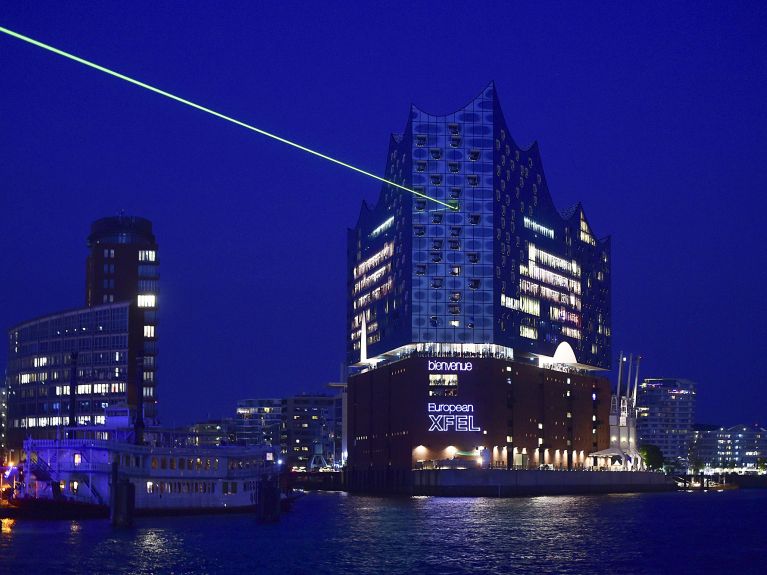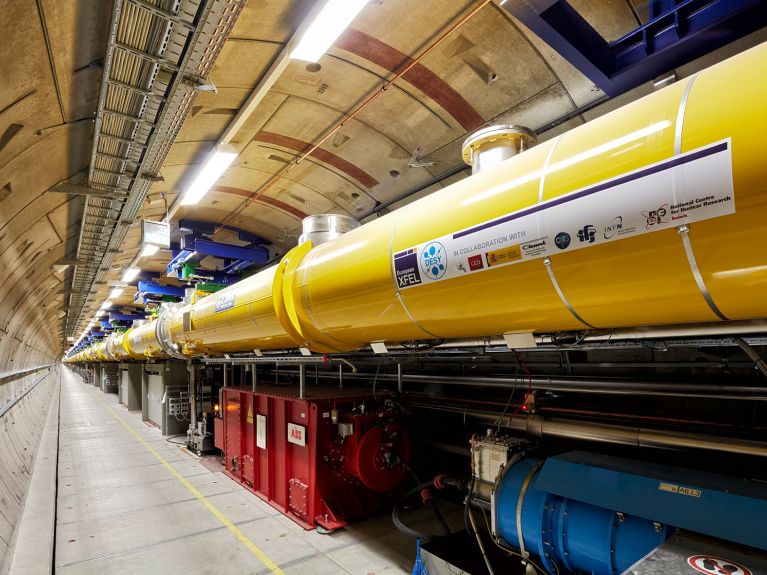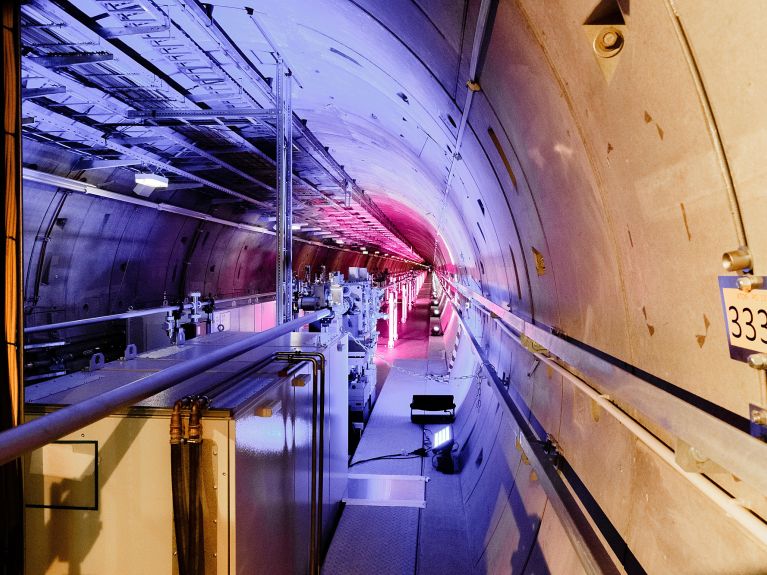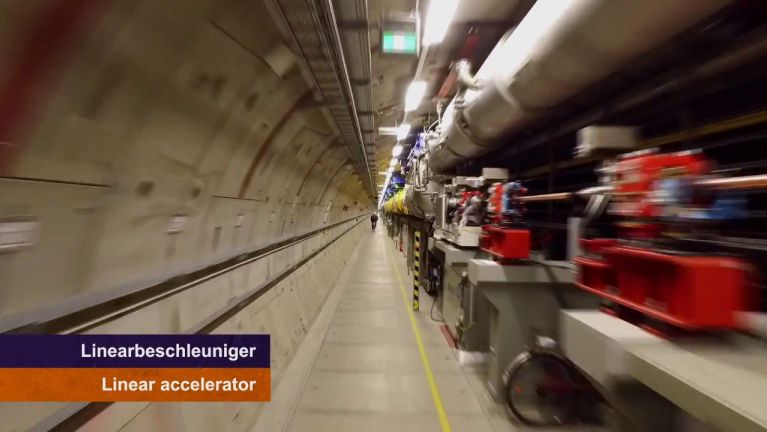The site of the strongest X-ray laser pulses
The highest-intensity X-ray light in the world is soon to shine beneath Hamburg: XFEL is at the ready. We explain what the researchers intend to use it for.
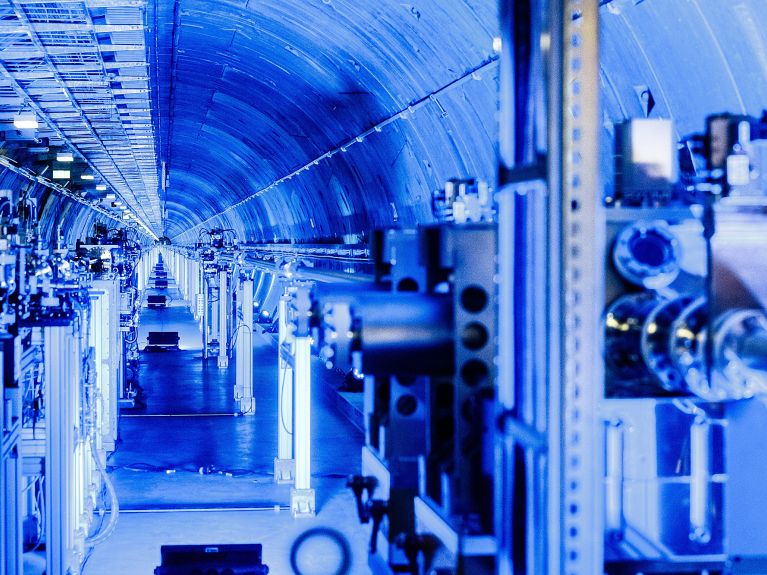
3.4 kilometres long, with a price tag of 1.22 billion Euros and funded by 11 countries: The new X-ray free electron laser European XFEL is finally to be commissioned in mid-September after a construction time of eight years – a superlative X-ray machine set to open up new perspectives to researchers.
What do scientists intend to study with the XFEL?
Thanks to the high intensity of the X-ray free electron laser, scientists could, amongst other things, map the atomic details of viruses and cells and film chemical reactions. With more accurate knowledge about viruses, researchers could develop new medications, for instance. Moreover, by subjecting materials to enormous pressure and heat, they can simulate processes taking place inside planets.
How does the X-ray laser work?
Electrons are accelerated and channelled onto a slalom course. Each electron emits X-ray light, which becomes increasingly stronger. This gives rise to ultrashort laser light pulses with an intensity that is billions of times stronger than that of normal X-rays. One XFEL pulse is less than 0.00000000000001 seconds short.
Can you see the XFEL in Hamburg?
The X-ray laser itself cannot be viewed. It is built into a 3.4-kilometre-long tunnel stretching from the Deutsches Elektronen-Synchrotron (DESY), a Research Centre of the Helmholtz Association, in Hamburg to Schenefeld.
Dieses YouTube-Video kann in einem neuen Tab abgespielt werden
YouTube öffnenThird party content
We use YouTube to embed content that may collect data about your activity. Please review the details and accept the service to see this content.
Open consent formWhy is the tunnel so long?
Two kilometres are required to accelerate the electrons close to light speed. The remaining 1.4 kilometres are used for generating light.
Who will be conducting research in Schenefeld in future?
Scientists from all over the world can apply to work with the XFEL at the research campus in Schenefeld. At present research groups from Russia and the UK are already at the facility. Eleven countries in total are involved in the project.
